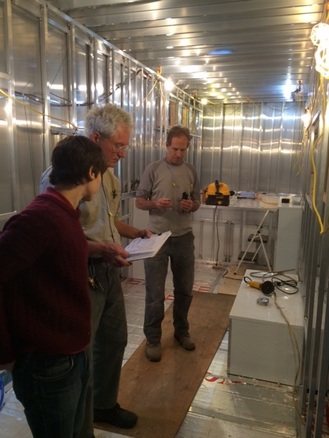A Tiny Healing House for a Sick Artist
|
Photo ©2015 Linda Haas
Aurora Levins Morales is an internationally known poet and essayist. She's the author of five books and her work appears in dozens of anthologies and has been translated into seven languages. Four years ago, she moved to Cambridge, Massachusetts to support her father after the death of her mother. Although the family home in Cambridge was unhealthy for her, that's where she found the help she needed. Staff at the Boston based Institute for Human Centered Design connected her with Sean Solley, a professor of Interior Design at Suffolk University. Students in his graduate Universal Design course worked closely with Aurora to come up with designs that met her complex needs.
She also began looking for builders willing to work with unconventional materials and methods, which wasn't easy. |
Aurora Levins Morales isn't just designing a non-toxic tiny house, she's designing a mobile life as a chronically ill writer. Aurora has severe environmental illness or Multiple Chemical Sensitivities (MCS). She also has Chronic Fatigue Syndrome, fibromyalgia, and neurological issues from multiple head injuries and a stroke.
Aurora Levins Morales didn't start building a tiny house on wheels to live a simpler life. She built it because she had to. And building a house was just the beginning. Aurora suffers from severe environmental illness, also known as Multiple Chemical Sensitivities. Conventional building materials, furnishings, household and personal products make her so sick that she became bedridden, unable to work, and eventually homeless. Her apartment was ruining her life. She tried hard to adapt her space in a low income housing cooperative in Berkeley, California. She replaced the carpets and linoleum with wood and cork, repainted with zero VOC paint, paid thousands of dollars to remove mold from inside the walls, and got an exception to inspection rules to allow her to disconnect her gas heater and use a space heater instead. But then her neighbors began using pesticides and strongly scented laundry products, and refused to stop, so after fourteen years, she had to walk away. That's when she realized that a tiny house on wheels would have allowed her to take her home with her. While living on porches, in offices and on couches, she began sketching her dream home, a real sanctuary where she could recover her health, and if her neighborhood changed, she could just roll away.
|

